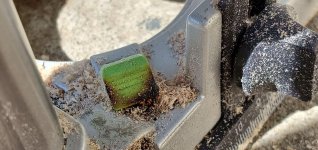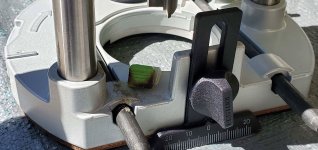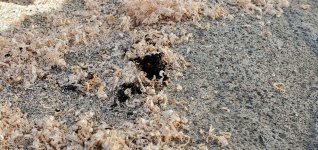TheSergeant
Member
- Joined
- Nov 14, 2015
- Messages
- 103
A couple weeks ago I was routing a groove with a brand new 3/4" Whiteside bit in some baltic birch plywood for a childrens bed I was making for my son. I wasn't using dust collection because I was working outdoors and the groove was so long that I didn't want to deal with the hose. I was taking multiple passes ~1/4" deep blowing chips away between each pass.
I finished the last groove and realized the router base was smoking. I was outdoors so it was tough to spot the flame but I realized it was on fire. Had I left the router on the table with the amount of dust that was there it could have turned bad fast.
You can see the ember and the melted lever on the base.
I've been woodworking for 6 years. Never had something like this happen. A little unnerving. Use that dust collection when you can and stay aware.

I finished the last groove and realized the router base was smoking. I was outdoors so it was tough to spot the flame but I realized it was on fire. Had I left the router on the table with the amount of dust that was there it could have turned bad fast.
You can see the ember and the melted lever on the base.
I've been woodworking for 6 years. Never had something like this happen. A little unnerving. Use that dust collection when you can and stay aware.




